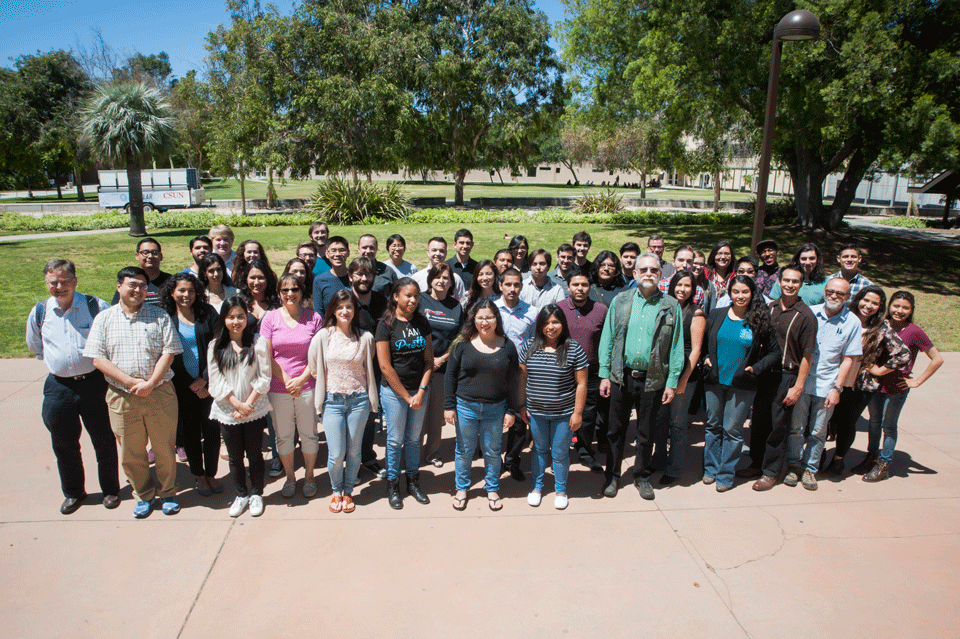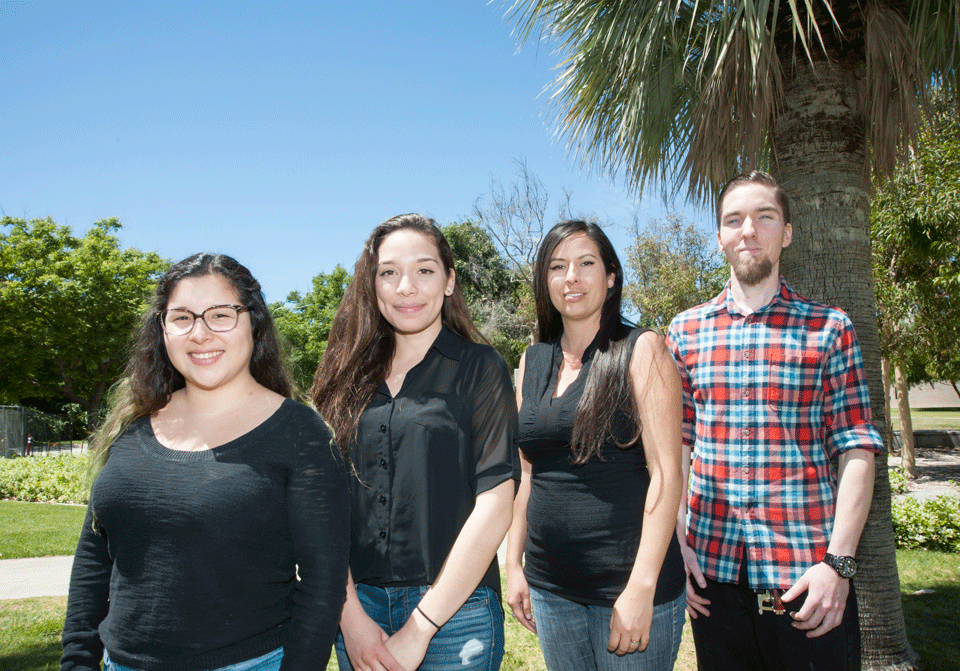CSU Students Present Year-Long Math Research Projects at CSUN Symposium
California State University, Northridge hosted students and faculty from seven other California State Universities for the PUMP Research Symposium on April 23 in Live Oak Hall. Preparing Undergraduates through Mentoring toward Ph.D.s (PUMP) is an initiative founded by the National Science Foundation and hosted by CSUN’s Department of Mathematics to motivate mathematics students to enter Ph.D. programs.
The initiative has expanded to other California State Universities and high schools throughout Southern California, and it was recently honored with an award for an exemplary program or achievement in a mathematics department by the American Mathematical Society.
One of PUMP’s key elements is the undergraduate research project, in which teams of two math students research complex mathematical topics and present them at the PUMP symposium. Each team is supervised by an advisor who helps mentor the team through the process.
“It was fun and a very beneficial experience,” said Diana Contreras, a junior and participant on one of the CSUN teams.
“We appreciate the opportunity to do it,” added her team partner, senior Kevin Manley.
Contreras and Manley researched and examined predictors for student success in college and presented a statistical approach that investigated the achievement gap between students from different socioeconomic backgrounds.
“Our supervisor, Dr. [Bruce E.] Shapiro, was already looking into it and when we approached him about the topic, he mentioned it,” Contreras said. “It was fun to figure out what the GPA cutoffs were in order to predict [graduation likelihood].”
The second CSUN team researched the Collatz problem, a prominent mathematical conjecture that investigates iterations of integers. Melida Paz and Miriam Ramirez, both math seniors, were advised by CSUN mathematics professor Werner Horn.
“I loved the open-endedness of it and that there is always more to find,” Paz said. “There is never an end to anything. You can spend as much time as you like and just immerse in mathematics.”
Paz and Ramirez discovered the Collatz problem in a book while researching their topic for the project. One year later, they resolved the conjecture for one specific case, which is a groundbreaking achievement for the two undergraduate students.
“We’re hoping to publish in a journal and get our results out there,” Ramirez said. “Knowing that your name might be out there somewhere and getting [credit] for what you have done is really rewarding.”
All 24 participating CSU students balanced their classes and research for an entire academic year, which many said was one of the program’s main challenges.
“It felt like I was a juggler,” Paz said. “I took five classes and did the research. It was pretty intense, but I enjoyed it a lot.”



 experience
experience